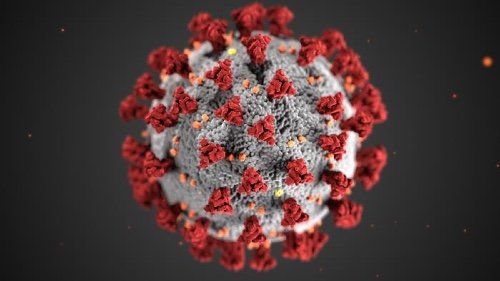The COVID-19 Conundrum
Thoughts on the impact on COVID-19 on imaging.

I got my first “is this coronavirus?” scan this past week. I had actually expected to have a lot more, a lot sooner.
I’d glanced at a couple of write-ups about the imaging of COVID-19 previously, knowing that sooner or later it would grace my screens. Still, this prompted me to pull up some references as I read the case. I find that my retention of such things is infinitely greater if I review them when I have an actual “unknown” in front of me at which to puzzle, rather than just reading articles in a vacuum.
Here, for instance, I remembered that “ground-glass opacities” and “septal thickening” were things to keep in mind. Unfortunately for me, the CT was of a patient with moderately-extensive chronic lung disease, with scattered areas of ground-glass and interstitial disease as part of its pattern. And, of course, no prior studies to let me know whether any of this was new. So, I wound up rendering an intellectually-unsatisfying (and probably clinically not-very-helpful) interpretation that it wasn’t particularly suggestive of COVID-19, but that the diagnosis wasn’t excluded.
I hate that sort of verbiage, because it’s stating what should be obvious: Imaging doesn’t exclude all kinds of pathology, even as referrers hopefully order studies for the purpose of “R/O [diagnosis du jour].” Think back to your med school epidemiology classes: How frequently did you see a diagnostic test with Negative Predictive Value of 100%? I think a lot of us feel the need to say “such-and-such is not excluded” mostly as a reminder to the referrer-and any potential ambulance-chasers.
Further, even a cursory glance online will inundate you with recommendations against imaging for diagnosis of the viral infection (most notably, from the CDC, referenced heavily by the ACR). Naso/oropharyngeal swabs are the way to go, if there is clinical suspicion.
Such guidelines are, unfortunately, easily ignored in the real world. Heck, while looking at one article about these recommendations, I practically laughed out loud when I saw that, as of 2018, the ACR Appropriateness Criteria stated that chest CT was “usually not appropriate” in cases of acute respiratory illness. I think someone forgot to tell that to the emergency room staff in, um, pretty much any institution I’ve ever covered.
I can’t be too harsh on them for this, though. Info on the current outbreak is coming fast and furious, evolving by the day. And, it’s pretty much impossible for anybody to be completely up-to-date. Especially folks in a busy ER. I wouldn’t be surprised if some facilities had made an administrative decision to have someone from pulmonary and/or infectious disease sitting in the emergency room around the clock. Just until things die down to a dull roar, do away with the whole routine of calling a consult and waiting for it to show up.
So, the folks in emergency rooms, urgent-care centers, even clinics and primary-care offices face a wave of patients who might or might not have COVID-19. The pressure is on to diagnose and isolate or treat the truly infected and appropriately
manage the majority who are not-including patients with other ailments and the “worried well.” Even if a clinician is 100-percent aware of the recommendation against imaging for viral screening, there’s still the question of “Could something else be going on in the lungs?” There’s always a rationale to get imaging.
But, again, they’re also under pressure to see other patients and generally get a bunch of things done at once. Just how much are they liable to write on the imaging requisition? And/or convey to their clerk who actually does the writing (or computerized order-entry)? Remember, these are the folks who, even prior to the outbreak, couldn’t find a way to order studies for more than “R/O path” or “Pain.” They might think they’re already going above and beyond to write “R/O COVID” for us.
So, as with any number of other pathological entities that routinely cross our path via inappropriate imaging, I continue to expect a flood of X-rays and scans in the name of ruling out viral infection. And, just as with other inappropriate imaging, I’ll learn to live with the routine of having maybe one-in-a-dozen cases actually resemble the disease in question, and a handful more having incidental diagnoses of clinical worth.
I do think there are silver linings to all of this. First, as serious as this outbreak is, it’s putting everyone through their paces enough that we might just have a prayer of responding effectively when the next pandemic-one with a much-higher rate of mortality or long-term complications-comes along. Also, a much-distant second: It being an election year, maybe the politicos will maintain a little more respect for the healthcare sphere and everyone in it as they make their campaign-promises.
The Reading Room Podcast: Emerging Trends in the Radiology Workforce
February 11th 2022Richard Duszak, MD, and Mina Makary, MD, discuss a number of issues, ranging from demographic trends and NPRPs to physician burnout and medical student recruitment, that figure to impact the radiology workforce now and in the near future.